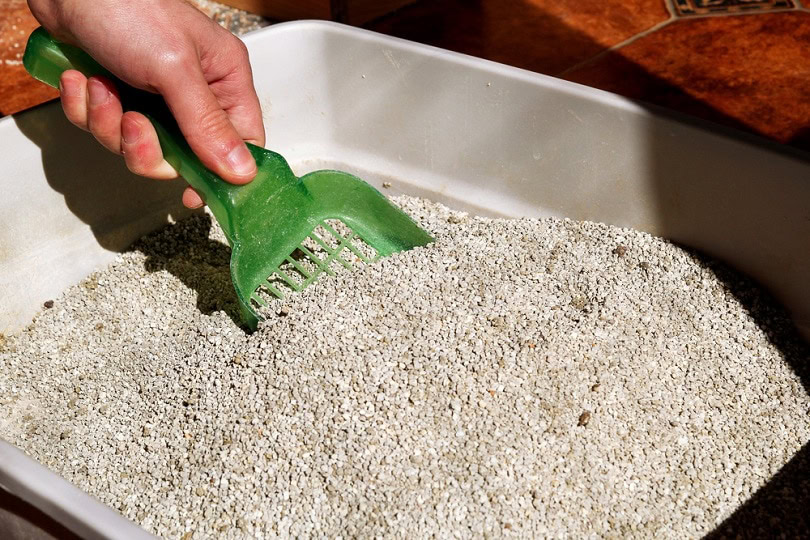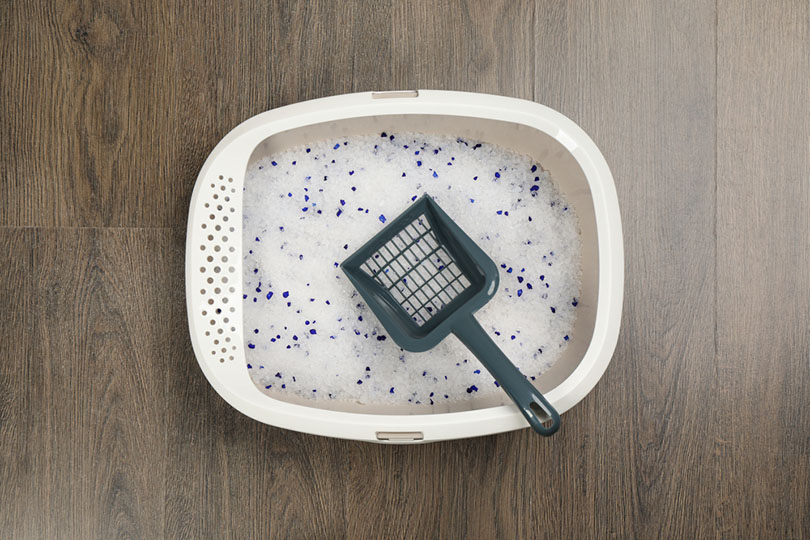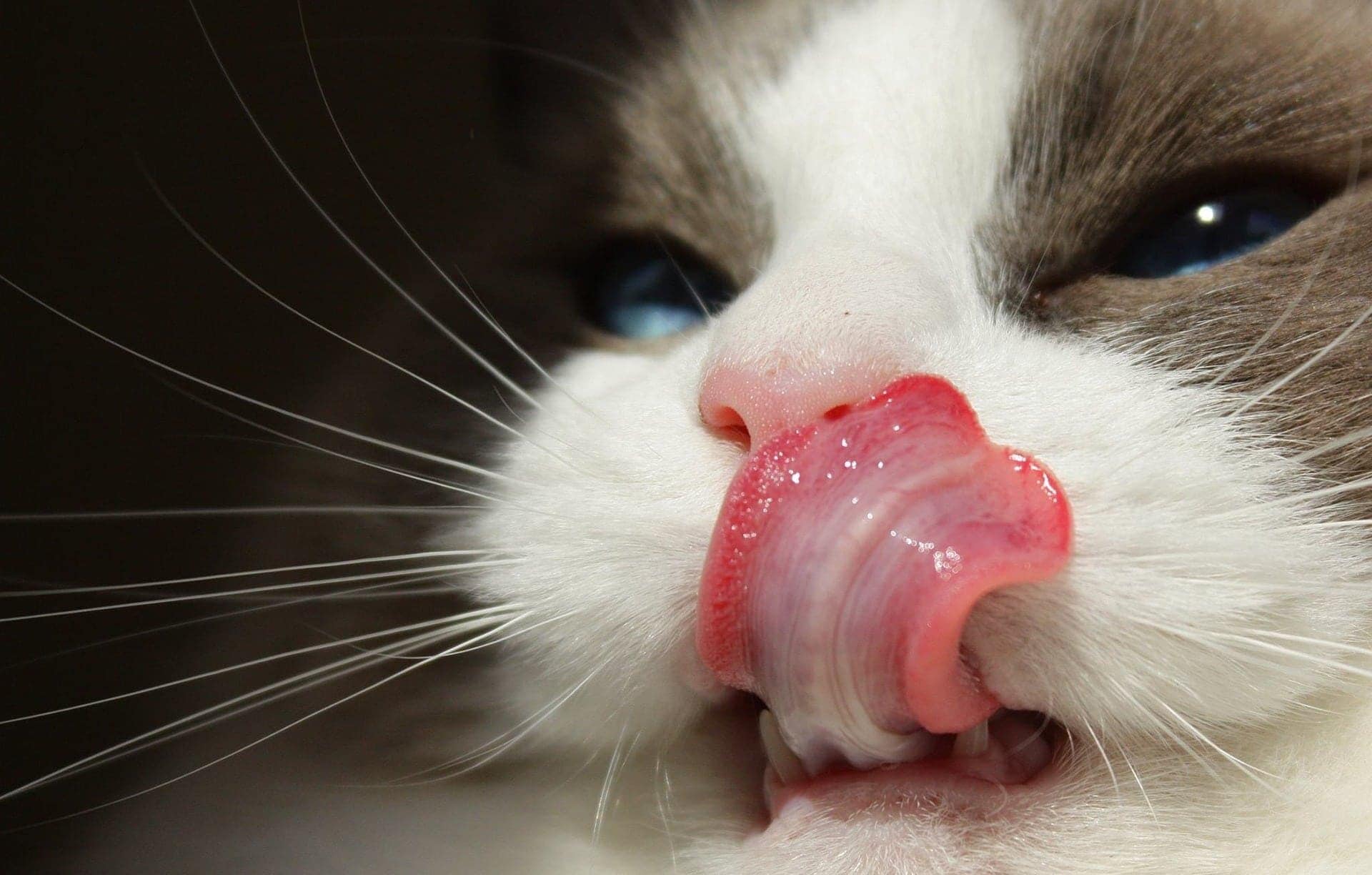VET APPROVED

The information is current and up-to-date in accordance with the latest veterinarian research.
Learn more »One of the least appealing aspects of owning a cat is having to deal with their soiled litter. Cat litter cannot simply be thrown in with the trash, as it has the potential to be hazardous to both you and the environment. Soiled litter needs to be disposed of properly. Cat waste can host a variety of pathogens, not least of which is toxoplasmosis, a dangerous illness for pregnant women or people with compromised immune systems. It’s estimated that more than 40 million people in the United States may be infected with the disease!1
But what is the best way of disposing of cat litter? How can you dispose of cat litter in a way that is beneficial for the environment and your home? In this article, we look at the best ways of dealing with your cat’s soiled litter. Let’s get started!

The 2 Ways to Dispose of Cat Litter
1. Biodegradable or Compostable Litter

The best way of dealing with cat litter effectively and in a way that is beneficial for the environment is to use biodegradable or compostable cat litter. There are a variety of cat litter available that are made from natural materials that break down easily and can return to the earth safely. These include compressed paper, wood shavings, and various other plant materials.
It’s important to note that there are key differences between biodegradable and compostable litter. Biodegradable litter will break down naturally all on its own, while compostable litter needs human intervention and needs to be composted to properly break down.
Biodegradable and compostable litter are more expensive than normal cat litter but are better for the environment and easier to dispose of. Of course, not all cat owners have access to a place where they can compost litter, so this is not an option for everyone. Moreover, when dealing with compostable cat litter, a hot composting system is a must. Most home composters almost never reach the required 140 degrees Fahrenheit necessary for extended periods to kill potential pathogens. Cats’ feces may carry Toxoplasma gondii and other pathogens, so if you can’t guarantee high temperatures, it’s best to avoid composting it. Compostable cat litter should only be used in non-edible plants to further prevent infections.
2. Biodegradable Litter Bags
The second option to dispose of cat litter is to use a scoop daily and toss the used litter into a biodegradable bag, which can then be thrown out with the trash. While this is not a truly zero-waste or sustainable solution, it’s the best that most people can do in their circumstances. Making the litter safe and sealing it in a bag that will eventually be biodegraded is better than simply throwing it in the trash. Even though it’ll end up in a landfill, the biodegradable bag and litter will eventually break down on their own. Using biodegradable or compostable litter is still the best option, even if you’re tossing it out with the trash. It is important to note that biodegradable bags with cat waste are not suitable for home composting due to the risk of Toxoplasma gondii. Verifying with local waste management guidelines is a must, as these regulations change from one locality to the next.

Always Use a Separate Trash Can for Litter
No matter the method of disposal that you choose, it’s best to always use a separate bin for soiled litter, along with separate bags. There are great litter disposal systems on the market that are designed to keep litter odor out of your home and make the whole disposal process quick and convenient. These systems help reduce wastage by using one heavy-duty bag until it’s full, and you can then simply tie it off and throw it away. The great part is that they’ll work with biodegradable and compostable litter and litter bags too.

Final Thoughts
The best way to dispose of cat litter is to use eco-friendly litter and biodegradable bags. This is the best option for the environment and the most convenient for you. Even if you are unable to compost the litter yourself, it will at least break down on its own when it reaches a landfill. Double-checking with waste management in your locality will ensure that you comply with local regulations.
You May Also Like:
- Here’s How Deep Cat Litter Should Be (3 Tips)
- 10 Best Cat Litter Box Furniture Enclosures: Reviews & Top Picks
Featured Image Credit: New Africa, Shutterstock











